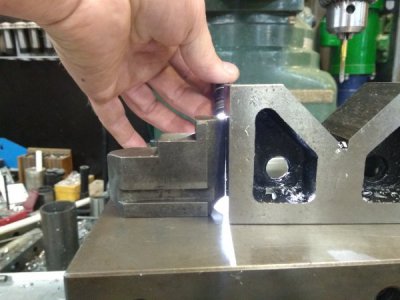- Joined
- Apr 30, 2015
- Messages
- 12,243
I think in many cases this is a last gasp procedure especially in cases of extreme bell mouthing it makes the difference between a terrible chuck and one that's a lot better than it was even with the concave profile of the jaw tips
Also too with 4 jaw independent chucks the jaws could be removed and ground on a surface grinder, they don't have to be done in situ
mark
Also too with 4 jaw independent chucks the jaws could be removed and ground on a surface grinder, they don't have to be done in situ
mark

